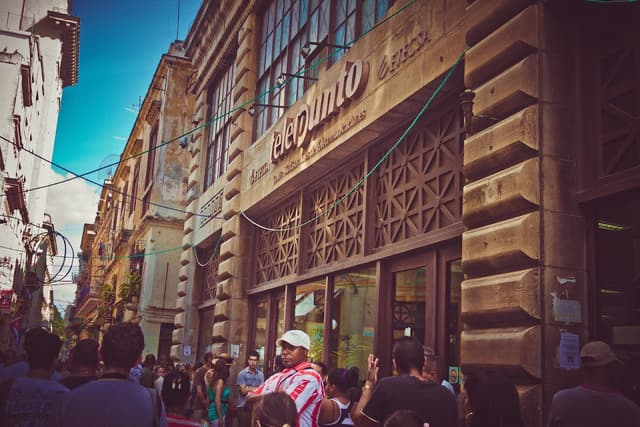How to Stay Connected in Cuba? SIM Cards and Internet Access

Getting a SIM Card in Cuba: My Advice
There’s really only one official way to get a SIM card in Cuba, and that’s through ETECSA, our government-run telecommunications company. Let me walk you through your options.

Option 1: Buy Before You Arrive
Officially, there is only one way to get a SIM card in Cuba. Websites like SuenaCuba let you choose a tourist plan that suits your needs in advance. Once you land in Havana, you can pick up your SIM card at the airport and connect.

Option 2: Buy After You Arrive
If you didn’t purchase a SIM card before arriving, you can get one at an ETECSA office. You’ll need your passport to complete the purchase. Be prepared for long lines and limited availability—it’s not the fastest option, but it’s doable if you’re patient.
Alternative: Renting a SIM Card with Your Guide
If you’d rather skip dealing with ETECSA or ordering in advance, your local guide can help you rent a local SIM card once you arrive in Cuba. For example, I include this as part of a welcome package for my guests. These aren’t tourist SIM cards—they’re regular ones that local people set up and rent out. It’s a simple and quick way to get connected as soon as you arrive, and your local guide can help if you have questions or need more data.
How to Use the Internet in Havana
Once you have your SIM card, you’ll need to decide how you want to access the internet. Here’s what works best:
Mobile Data (My Recommendation!)
Mobile data is the main way people stay connected in Cuba. After getting your SIM card, you can purchase a data plan through ETECSA. The plans are affordable compared to many places, but the connection can sometimes be unreliable due to high usage, power outages, or technical issues.
Here’s what to keep in mind:
- Peak Hours: The network can slow down when lots of people are online, usually in the evenings.
- Signal Reliability: It’s not perfect, but it gets the job done. Just remember that things might not be as fast or consistent as back home.
- Future Costs: Starting in 2025, the cost of mobile data is expected to increase for both locals and tourists.
Public Wi-Fi (Less Reliable)
Wi-Fi hotspots are still available in parks, public squares, and some hotels, but they’re less common now. To connect, you’ll need an ETECSA Wi-Fi card, which gives you a set amount of browsing time. These can be purchased at ETECSA offices or from vendors near the hotspots.
The downside? Connections are often slow and crowded, and it’s not the most convenient way to stay online. If you’re just checking your email or sending a quick message, it might work, but for anything more, mobile data is better.
My Tips for Staying Connected
- Plan Ahead: If you can, talk to your guide about your SIM card before you arrive. Picking it up early means you’ll be connected from the start of your trip.
- Use Messaging Apps: WhatsApp is widely used here, and it works well even with slower internet. It’s how most locals stay in touch, and it’s good for quick messages and calls.
- Expect the Unexpected: Cuban internet isn’t always predictable. Sometimes the signal drops, or speeds slow down during peak hours. Take it as a chance to disconnect a bit and soak in your surroundings.

Final Thoughts from Your Local Guide
Here in Havana, staying connected is just another part of the adventure. Internet access might not be perfect, but it’s all part of the charm of exploring Cuba.
If you ever need help—whether it’s setting up your SIM card, understanding data plans, or finding the best places to explore—I’m just a message away. Welcome to Havana, and I can’t wait to help you make this trip unforgettable! ¡Nos vemos pronto!
The home for unique & authentic travel